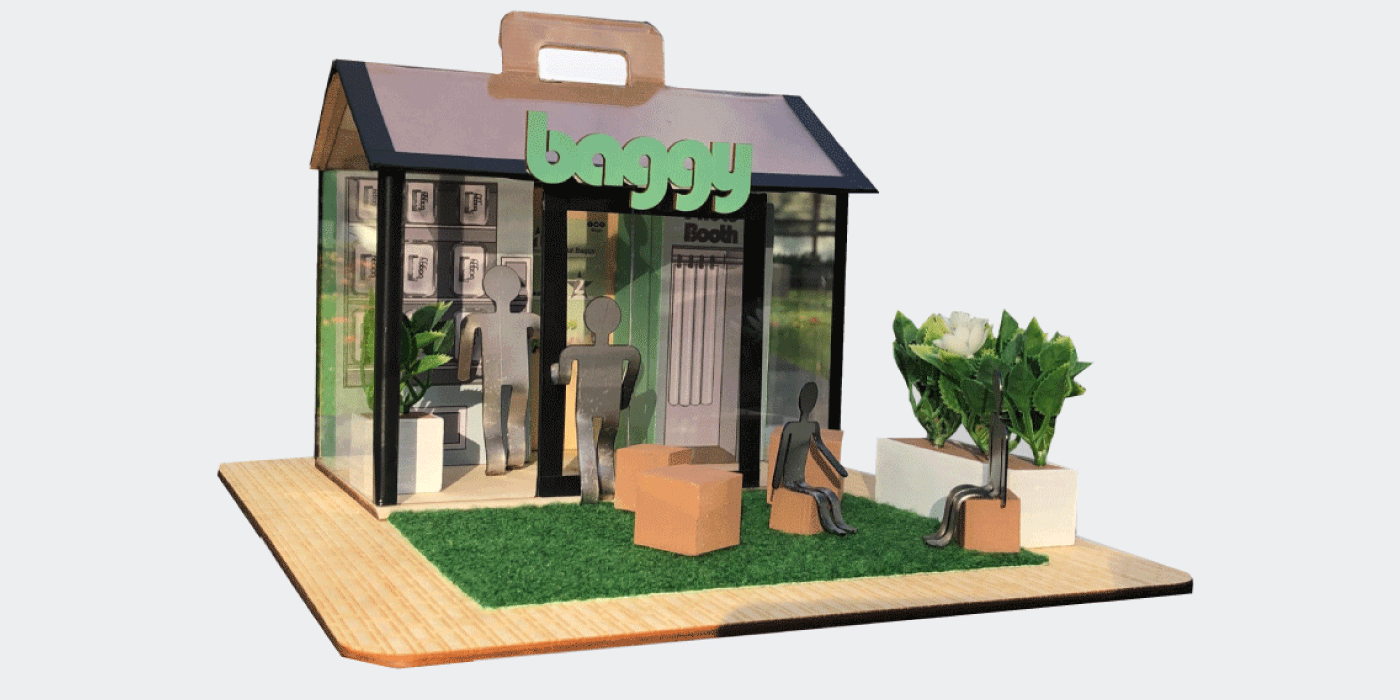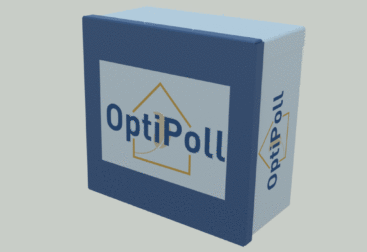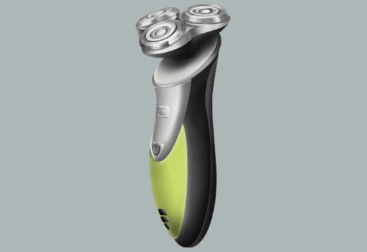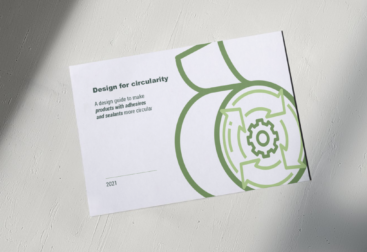One of the projects I worked on in my bachelor’s programme was to design a pop-up space for on De Oude Markt in Enschede. We had to deal with different stakeholders and user groups who often have conflicting needs and desires in a specific use situation. We had the opportunity to learn how to transform these conflicts into valuable design opportunities for influencing human experience and behavior.
Pop-up spaces are a good way to bring people together, to showcase something, or to test public reaction to certain ideas. Most importantly, well-designed public spaces can contribute to UN sustainable development goals -“safe, inclusive and accessible, green and public spaces…” by 2030. Therefore, the design brief was to “design a short-term space to accommodate a public activity of your choice”.
Ideation
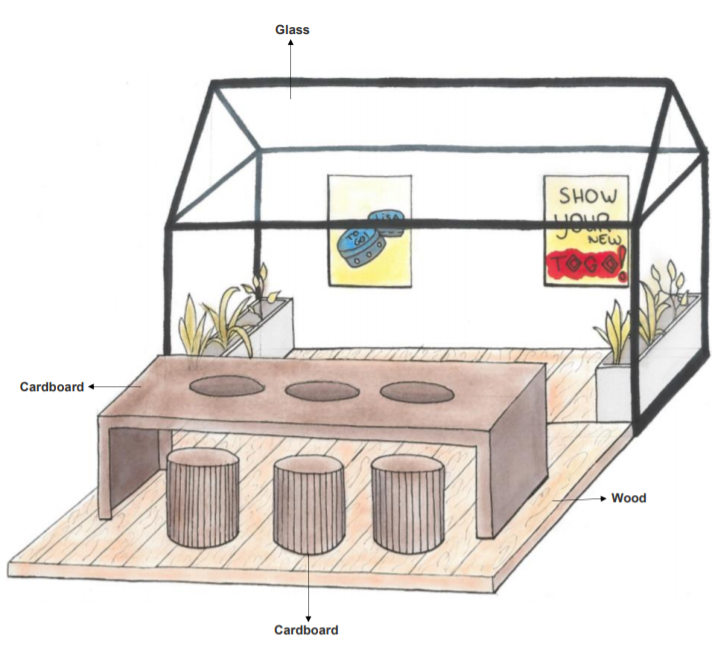
Although we were working in a team, the ideation phase had to be done individually. Our aim was to design a pop-up space that encourages people to live more environmentally sustainable by making them aware of the possibilities on how to do so. In the ideation phase, everyone came up with three different concepts. After getting feedback from our peers and professors, our team decided to work out one of my concepts, which is illustrated on the left.
The Concept
The purpose of this pop-up space is to make people less embarrassed to use a doggy bag in a restaurant. Interviews were conducted with the restaurant owners at the Oude Markt to gain more knowledge on the current situation and to get insights into their perspectives. The research concluded that a lot of food is wasted because people feel ashamed to ask if they can take their food with them. By placing this pop-up space on De Oude Markt, which is the most convivial café terrace in the area, the aim was to make it more acceptable for people to take their leftovers with them.
This concept was just the beginning of our pop-up space called Baggy. The final design has been elaborated together with the other team members.
The Final Design
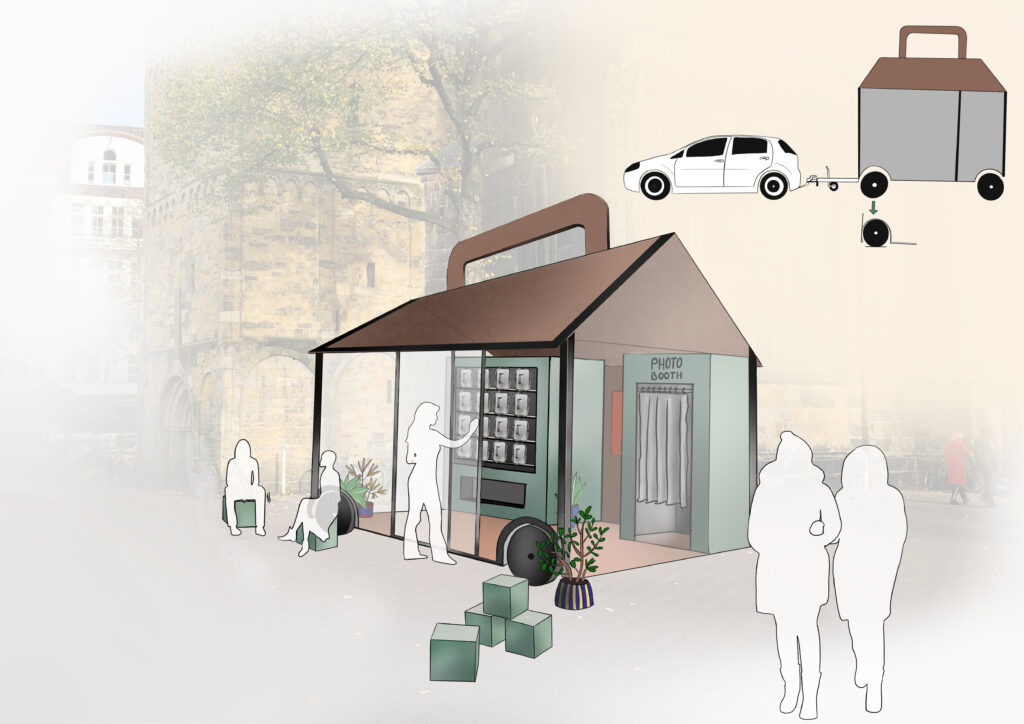
This pop-up space represents both a doggy bag and a greenhouse. Inside, a vending machine and a photo booth are located. Outside, visitors have the possibility to take a seat on one of the differently sized cubes. This allows them to have a conversation about food waste and environmental sustainability.
The pop-up space is also a trailer which can be pulled behind a car for transportation. The height of the complete pop-up space can be changed through the shock absorbents located next to the wheels.
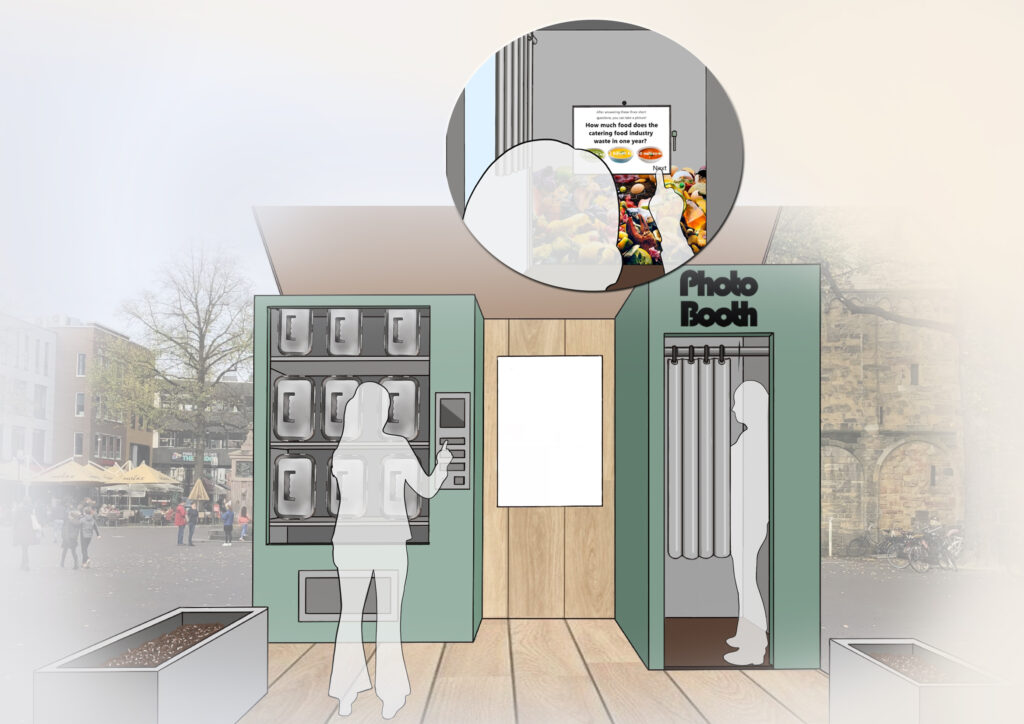
Visitors can get a reusable doggy bag from a vending machine. This way, it will lower the threshold to make use of a doggy bag. The vending machine releases one baggy per credit card for only one cent. This makes sure that visitors are able to get a doggy bag, without taking too much advantage of it.
The photo booth allows people to take a picture with their new Baggy and share it on social media. To make the visitors more aware of food waste, they will first have to answer three short questions before receiving their picture. Afterwards, the picture will be sent to them by email.
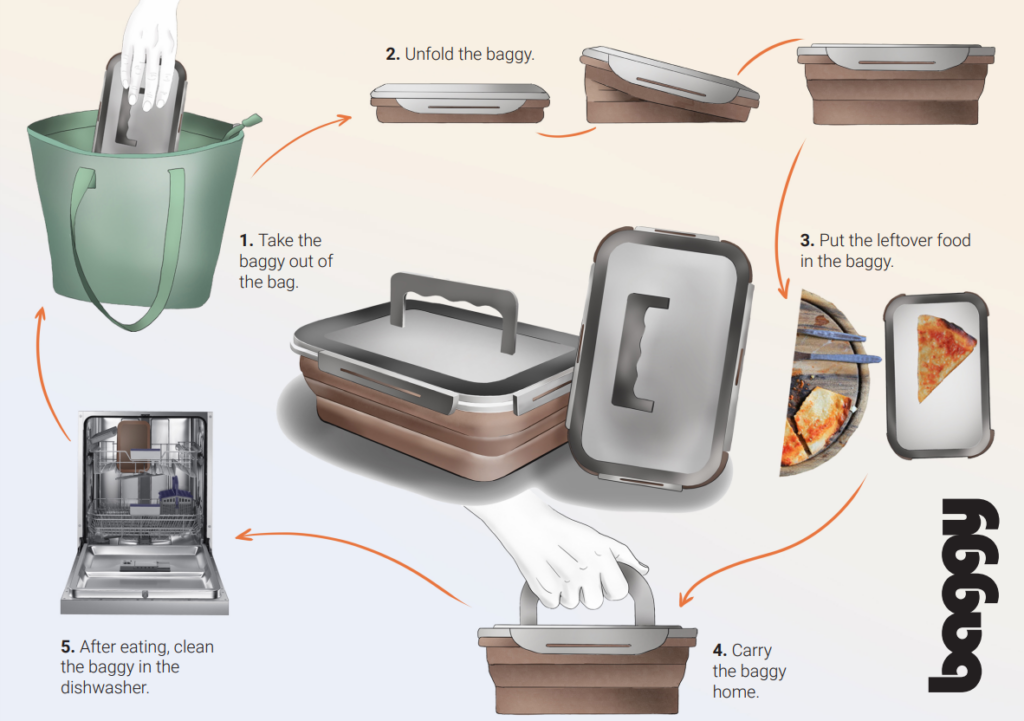
The illustration above describes how the Baggy itself can be used. The Baggy is made out of silicon, which is highly durable and can be cleaned in the dishwasher. Also, it is a very flexible material, which makes it easy to fold the Baggy and take it with you in your bag. This makes it easier to take your Baggy with you when dining out. Users can also take their Baggy home by making use of the handle, which is placed at the lid of the Baggy.
My Experience
This project was different then usual, which I enjoyed very much. We got to work on something else than only the product, because we also had to design the space around the product. Also, we developed the pop-up space for a real life problem. We got to interview persons from different restaurants and cafés on De Oude Markt. It was very interesting to get in contact with these different stakeholders, because they all had a different view on the same issue.
